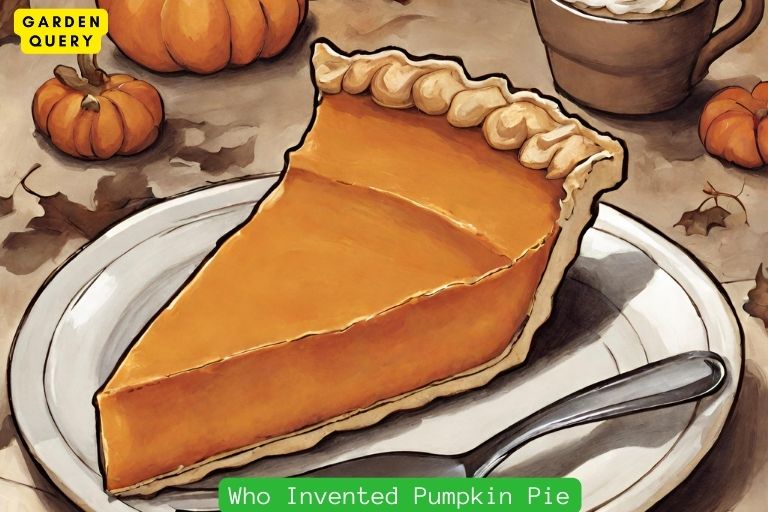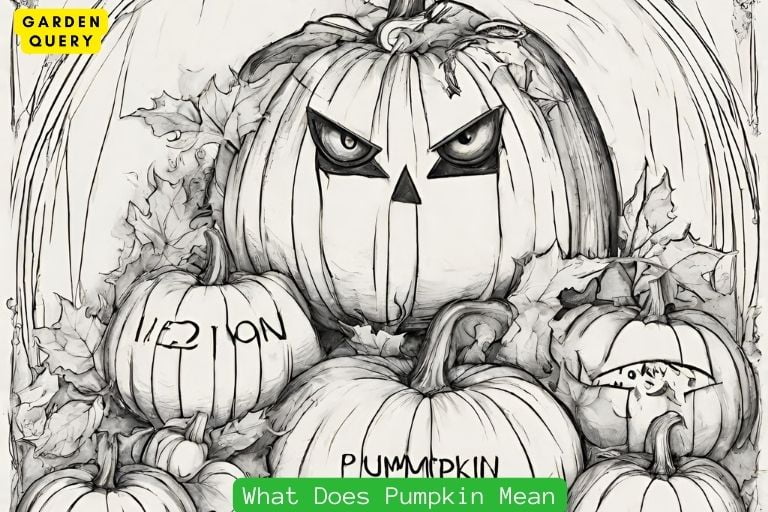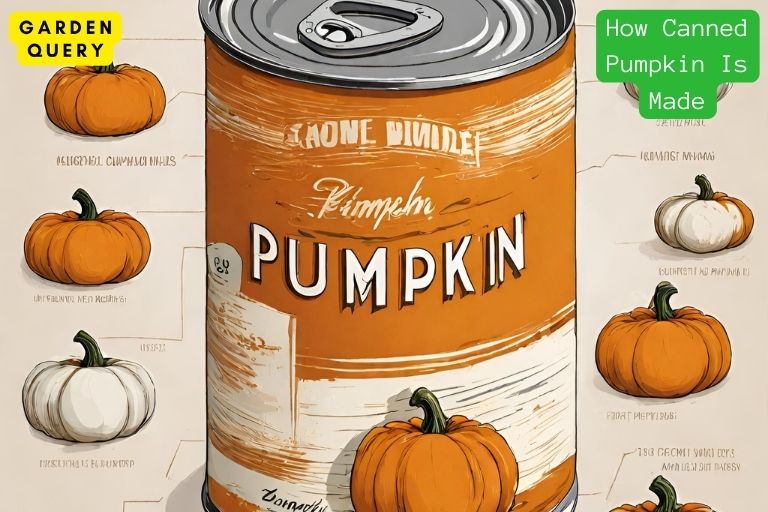Who Invented Pumpkin Pie?
Historical Origins of Pumpkin Pie
Pumpkin pie is a favorite dessert during the fall season, often associated with Thanksgiving. But have you ever wondered about its historical origins?
The history of pumpkin pie can be traced back to early American settlers and their interaction with Native Americans. Native Americans had long been using pumpkins and other squashes in their cooking, and they introduced these practices to the settlers.

The earliest version of pumpkin pie was quite different from what we enjoy today. The settlers would hollow out a pumpkin, fill it with ingredients like honey, milk, and spices, and then roast it in hot ashes. This method was known as “pumpkin pudding.”
Over time, the recipe evolved, and the settlers began baking the filling in a crust instead of the pumpkin itself. They would combine the pumpkin pulp with eggs, cream, and spices, such as cinnamon, nutmeg, and ginger. This new version of pumpkin pie became popular among the settlers and eventually spread throughout the colonies.
However, it was not until the 19th century that pumpkin pie became widely associated with Thanksgiving. Sarah Josepha Hale, a prominent writer and editor, played a significant role in popularizing the idea of a national Thanksgiving holiday. In her efforts to unify the country during the Civil War, she published recipes, including one for pumpkin pie, in her influential magazine, Godey’s Lady’s Book.
The recipe for pumpkin pie gained popularity and became a staple at Thanksgiving feasts across the United States. It soon became ingrained in the American culinary tradition.
While pumpkin pie is undoubtedly a quintessential American dessert, the use of pumpkins in cooking goes back much further. Native Americans have been cultivating and consuming pumpkins for thousands of years. They would roast or boil them, incorporate them into stews, or dry them for later use.
The early settlers recognized the value of pumpkins and quickly adapted them into their own culinary practices. The combination of Native American techniques and European influences ultimately led to the creation of pumpkin pie.
In conclusion, pumpkin pie has a rich history intertwined with the early American settlers and Native American cooking traditions. What began as a simple “pumpkin pudding” roasted in a pumpkin slowly transformed into the beloved dessert we know today. So the next time you enjoy a slice of pumpkin pie, take a moment to appreciate its historical roots and the blending of cultures that made it possible.
Early Recipes and Evolution
The history of pumpkin pie traces back several centuries, and its invention is often credited to the early American settlers. However, it’s important to note that pumpkin pie as we know it today has evolved over time.
Early recipes for pumpkin pie were quite different from the popular dessert we enjoy during holidays. Instead of a sweet pie, these recipes called for boiling the pumpkin with spices and then pouring the mixture into a crust. The resulting dish was more like a savory stew than a sweet treat.
One of the earliest known recipes for pumpkin pie comes from “American Cookery,” a cookbook written by Amelia Simmons in 1796. Her recipe involved cooking pumpkins, straining them, and combining the pulp with milk, eggs, and spices. This mixture was then baked in a crust. It’s worth noting that Simmons’ recipe used molasses rather than sugar, which was more readily available at the time.
Over time, the recipe for pumpkin pie gradually evolved. As sugar became more accessible and affordable, it started replacing molasses as the primary sweetener. Additional spices such as cinnamon, nutmeg, and ginger were also added to enhance the flavor.
The popularity of pumpkin pie grew in the early 19th century, with many regional variations emerging. Some recipes included the use of cream or evaporated milk, while others relied on condensed milk. Each variation contributed to the unique characteristics of the pie we know and love today.
As pumpkin pie became an integral part of Thanksgiving celebrations in the United States, it gained more prominence and recognition. Commercially produced pumpkin puree, which made it easier to create the pie filling, became available in the late 19th century, further popularizing the dessert.
In conclusion, while the early American settlers can be credited with introducing pumpkin pie to the culinary world, the dessert has undergone significant changes and adaptations over the years. From its humble beginnings as a savory dish to becoming a symbol of holiday gatherings, pumpkin pie has evolved into a beloved sweet treat enjoyed by many.
Popularization of Pumpkin Pie
The popularity of pumpkin pie can be credited to the early American settlers and their ingenuity in creating a delicious dessert from the bountiful harvest of pumpkins. As the colonists explored the New World, they discovered the native pumpkin and quickly incorporated it into their culinary traditions.
One of the earliest recorded recipes for pumpkin pie can be traced back to the 17th century, where it appeared in a cookbook written by English poet and doctor, Hannah Woolley. This recipe was quite different from what we know as pumpkin pie today, as it called for a mixture of cooked pumpkin, spices, and wine, all baked in a pastry shell. It was a popular dish among the English upper class, but it took time for it to become more commonly enjoyed.
It was not until the 19th century that pumpkin pie gained widespread popularity in America. With the availability of canned pumpkin and the development of more streamlined baking methods, this humble pie became a staple of Thanksgiving celebrations across the country. The inclusion of spices such as cinnamon, nutmeg, and cloves added a delightful warmth and depth of flavor to the pie, making it truly irresistible.
The popularization of pumpkin pie also coincided with the rise of advertising and commercial baking. Companies like Libby’s, who began producing canned pumpkin in the late 1800s, played a significant role in making pumpkin pie accessible to the masses. They even provided recipes on the label, ensuring that even novice bakers could easily create this beloved dessert.
Today, pumpkin pie is an integral part of American culinary traditions, particularly during the autumn season. It is often enjoyed with a dollop of whipped cream or a scoop of vanilla ice cream, elevating its creamy texture and rich taste. Its association with Thanksgiving has solidified its place as a symbol of warmth, comfort, and togetherness.
In conclusion, the popularization of pumpkin pie can be traced back to the resourcefulness of early American settlers and their incorporation of the native pumpkin into their culinary practices. Through the centuries, this humble dessert has evolved and captured the hearts of people across the nation. Whether enjoyed on Thanksgiving or any other occasion, pumpkin pie continues to bring joy and delight to those who savor its delicious flavors.
Legacy and Cultural Significance
Pumpkin pie has a rich legacy and holds significant cultural importance in many different societies. It has become an iconic symbol of autumn and is especially associated with Thanksgiving in the United States.
In America, pumpkin pie has deep roots in the country’s history and has been enjoyed since the early colonial period. It is believed that the Pilgrims and Native Americans shared a feast that included pumpkin dishes, possibly including a primitive form of pumpkin pie. Over time, pumpkin pie became a beloved tradition in Thanksgiving celebrations, symbolizing abundance, comfort, and gratitude.
Beyond the United States, pumpkin-based desserts and pies can also be found in various cuisines around the world. In Canada, pumpkin pie is a staple during Thanksgiving just like in the United States. In Australia, pumpkin pie is popular as a sweet treat during Halloween. In many European countries, pumpkin-based desserts are embraced, as well.
Pumpkin pie also holds cultural significance in different communities. For example, in Mexican culture, pumpkin-based desserts are commonly enjoyed during the holiday season, particularly in traditional dishes like calabaza en tacha (candied pumpkin). In some Asian countries, like Japan and Korea, pumpkin desserts are cherished for their unique flavors and vibrant colors.
Furthermore, pumpkin pie has transcended cultural boundaries and has become a symbol of togetherness and family gatherings. It has a nostalgic appeal that brings people together, evoking fond memories of sharing meals, laughter, and love.
In recent years, pumpkin spice, a blend of spices commonly used in pumpkin pie, has gained immense popularity and become a cultural phenomenon. It has inspired a wide range of products, including lattes, cookies, candles, and even limited-edition seasonal items. The pumpkin spice craze further highlights the enduring legacy and cultural significance of pumpkin pie.
In conclusion, pumpkin pie holds a prominent place in culinary history and cultural traditions. Its legacy spans centuries and has become synonymous with certain holidays and special occasions. Whether enjoyed as a classic dessert or transformed into innovative variations, pumpkin pie continues to bring joy, warmth, and togetherness to people around the world.
Conclusion
In conclusion, the invention of pumpkin pie is a bit of a mystery. While the origins of pumpkin in cooking can be traced back to the Native Americans and early settlers in America, the specific creation of pumpkin pie as we know it today is still up for debate.
It is believed that the early American colonists, inspired by Native American cooking techniques and ingredients, started experimenting with incorporating pumpkins into their desserts. This could possibly be the beginning of the pumpkin pie as we know it.
Over the years, the process of making pumpkin pie has evolved and various recipes have emerged. However, the exact person or group responsible for inventing pumpkin pie remains unclear. It’s possible that it was a collective effort from multiple individuals who recognized the potential of pumpkins in creating a delicious and comforting dessert.
Regardless of who invented it, pumpkin pie has become an iconic dish during the fall season and especially during Thanksgiving celebrations. It has become deeply ingrained in American culture and is enjoyed by many around the world.
So, the next time you take a bite of a slice of pumpkin pie, remember that you are not only indulging in a delicious treat but also connecting with a long and fascinating history that spans
- Best Therapists In Dallas - February 1, 2024
- Holly Willoughby Husband: Holly Willoughby’s Love Story - January 30, 2024
- Holly Willoughby Dress: 5 Style Secrets and 7 Must-Know Career Milestones - January 30, 2024





